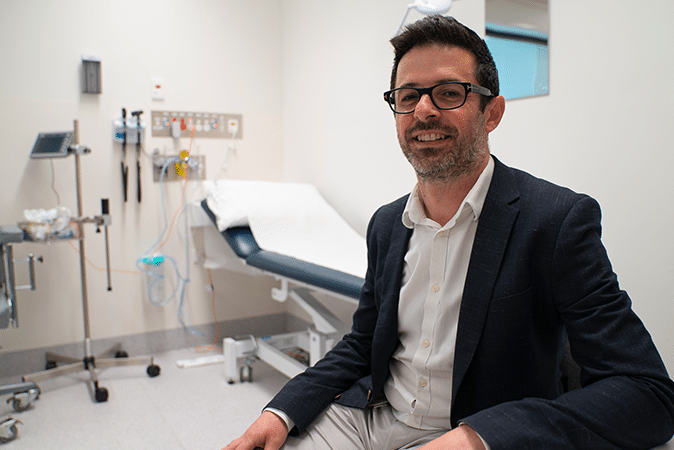How Common is Paget’s Disease of the Nipple?
Paget’s disease of the nipple is a rare form of breast cancer which accounts for around two of every 100 cases (2%) of breast cancer.
What are the symptoms of Paget’s Disease of the Nipple?
As the name suggests, the symptoms of Paget’s disease of the nipple usually involve a change in the nipple and/or areola. Paget’s disease of the nipple always starts in the nipple and may extend to the areola.
Symptoms of Paget’s disease of the nipple may include:
- Itching, tingling or redness in the nipple and/or areola
- Flaking crusting or thickened skin on or around the nipple
- A flattened nipple
- Yellowish or bloody discharge from the nipple.
The symptoms of Paget’s disease of the nipple may be mistaken for some benign skin conditions such as dermatitis or eczema. Due to the similarities with these conditions, some early symptoms may be misdiagnosed at first.
If you notice any changes in the skin of your nipple or areola, you should consult your GP or doctor.
How is Paget’s Disease of the Nipple Diagnosed?
A nipple biopsy will be used to correctly diagnose Paget’s disease of the nipple. A breast surgeon will perform a biopsy to remove a small piece of tissue from the nipple and/or areola area to examine it.
However, as some people with Paget’s disease of the nipple will also have an underlying breast cancer, your doctor will also do a physical exam, and will request imaging tests such as a mammogram or breast MRI.
How is Paget’s Disease of the Nipple treated?
Treatment for Paget’s disease of the nipple will depend on how much of the nipple, areola and breast is affected.
Breast surgery is the primary treatment for Paget’s disease of the nipple. This may involve a full mastectomy if the disease appears to involve a large portion of the breast, or the removal of the nipple and areola with the breast tissue underneath, known as breast conserving surgery, if it is not extensive.
Radiotherapy is commonly recommended after breast conserving surgery and is sometimes recommended after a mastectomy for patients diagnosed with Paget’s disease of the nipple.
If the invasive cancer has spread beyond the nipple, treatment with chemotherapy, radiotherapy and/or targeted or hormone therapy may be recommended.
What Are My Chances of Survival (Prognosis) if I am Diagnosed with Paget’s Disease of the Nipple?
If you are diagnosed with Paget’s disease of the breast, but it has not spread further to the surrounding breast tissue, the prognosis is excellent.
If there is an underlying cancer in the breast, survival rates decline as the stage of the cancer increases. Your age, stage of disease and tumour type has an impact on your chance of surviving five years past your breast cancer diagnosis. Those diagnosed with stage one breast cancer have an almost 100% chance of surviving five years post diagnosis, however those diagnosed with stage four breast cancer only have a 32% chance of surviving five years post diagnosis.
Overall, the five-year survival rate for women diagnosed with breast cancer is 91.5%, and 86.4% for men.
Support Us
Help us to change lives through breast cancer clinical trials research



